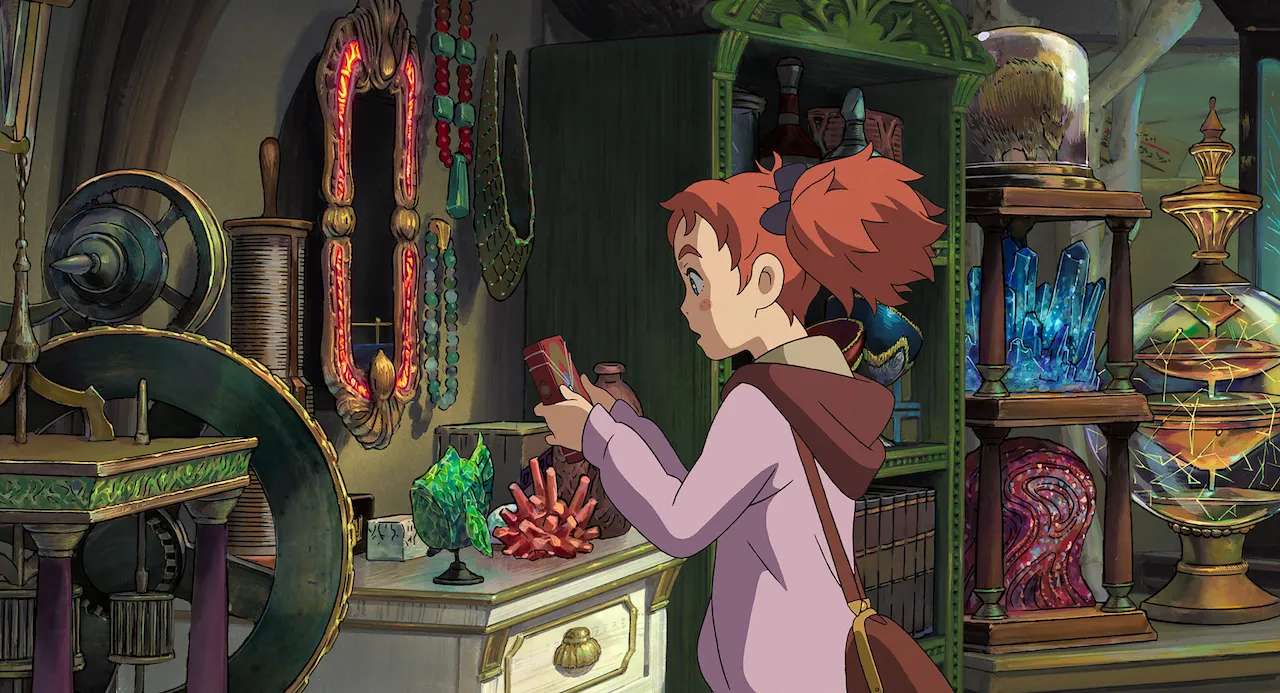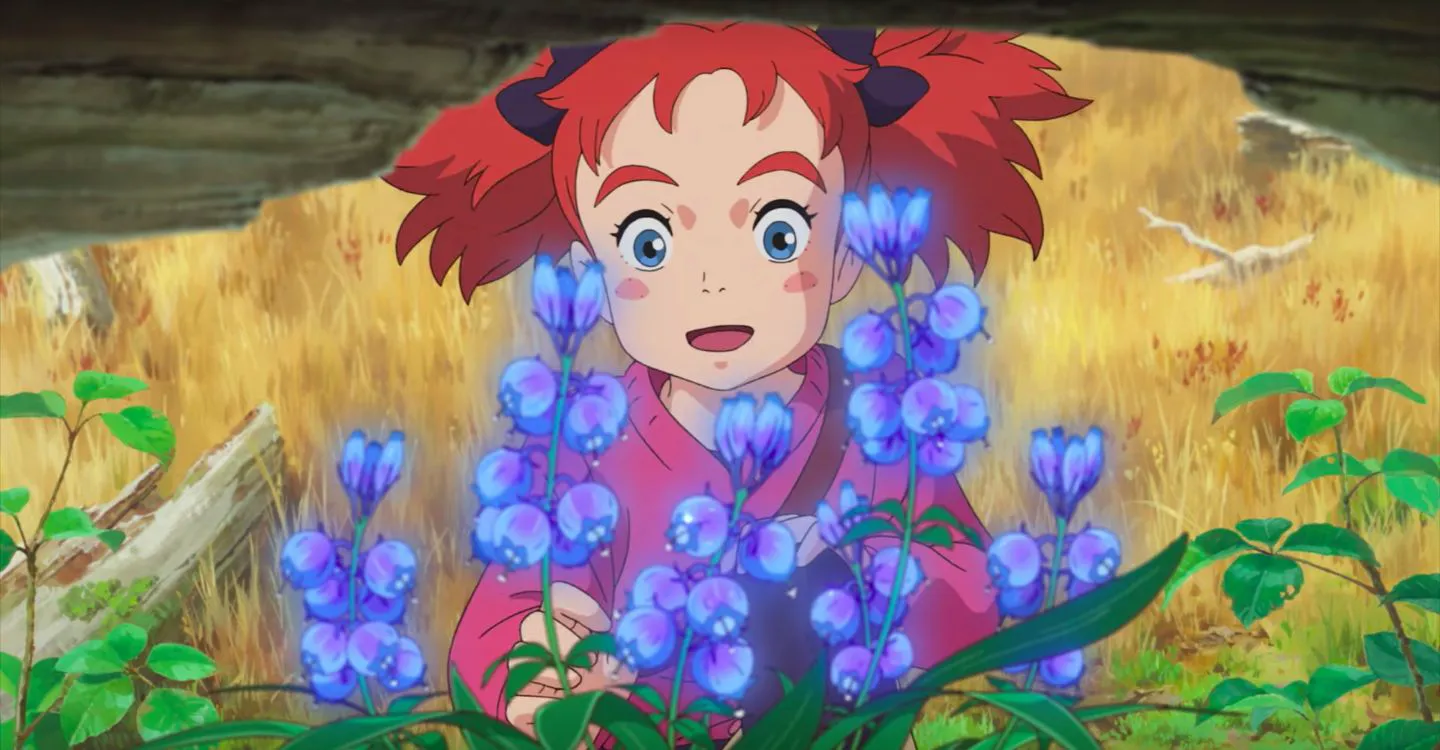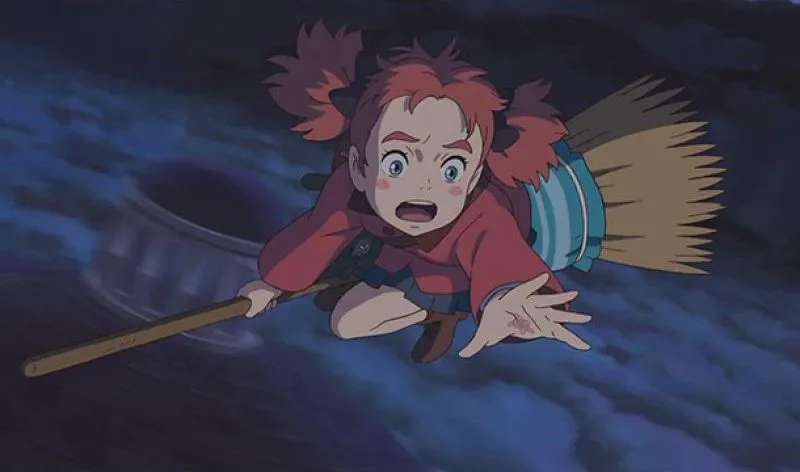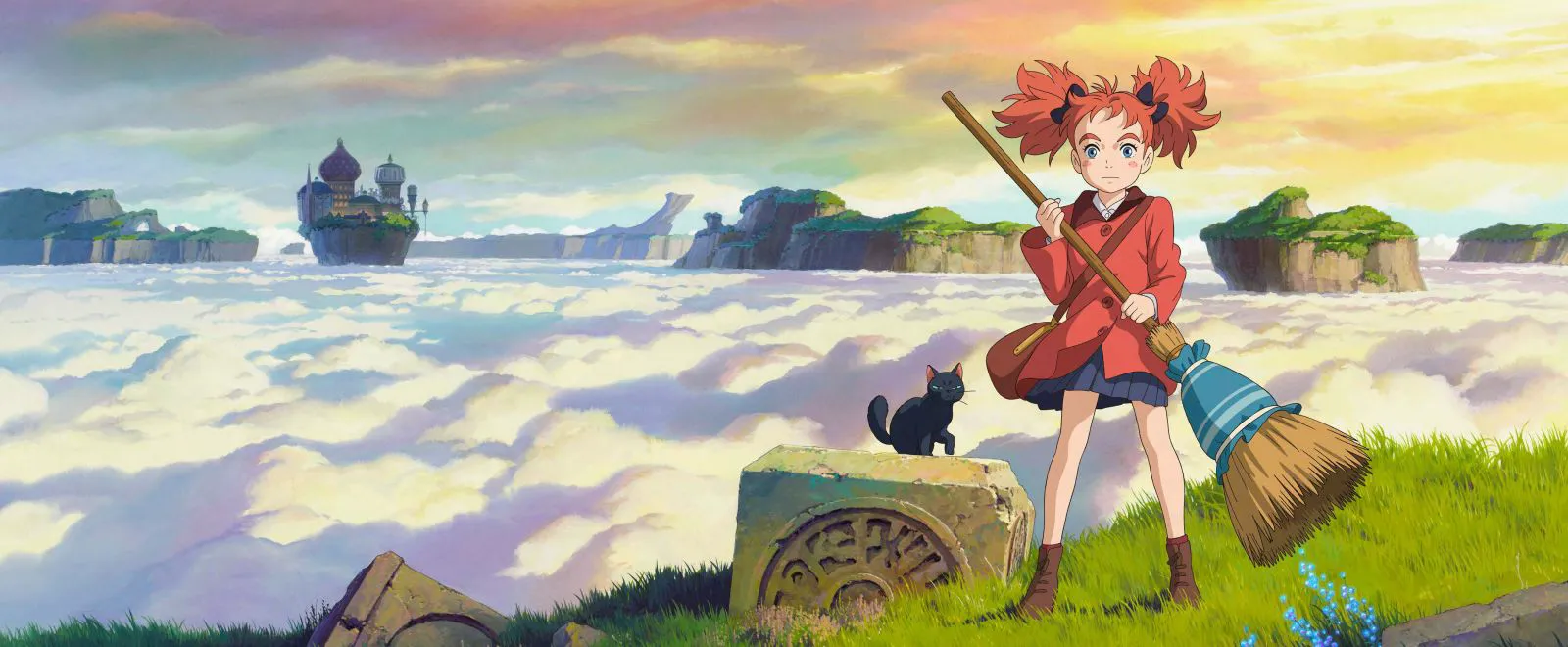Mary and the Witch’s Flower: A Whimsical Animated Adventure
A charming and visually stunning Japanese animated film tells the story of a young girl who stumbles into a world of magic and mischievous sorcerers.
Mary Smith, a spirited young girl, is spending her summer with her grandmother in the tranquil English countryside. Bored and restless before school starts, Mary explores the surrounding woods. During one of her adventures, she discovers a mysterious, glowing flower. To her surprise, the flower grants her magical powers and leads her to a broomstick hidden nearby. As Mary takes flight, the broom carries her away to a hidden island, home to a prestigious college for witches and wizards. The headmistress, mistaking Mary for a new student, warmly welcomes her and gives her a tour of the enchanting academy. However, when the headmistress realizes that Mary’s magic comes from the rare flower, she hatches a sinister plan to exploit its power.

Fun Fact: The name of the animation studio, Ponoc, is pronounced “Poh-nok” by the Japanese, but it actually originates from the Serbian word “ponoć,” meaning “midnight.”
Studio Ponoc: Carrying on the Legacy of Ghibli
For those who follow Japanese animation, the endless saga of Hayao Miyazaki’s retirements and subsequent returns can be tiresome. It seems even his own staff felt the same way. Several years ago, many of Miyazaki’s former colleagues left Studio Ghibli to establish a new animation company, Studio Ponoc. Their mission: to create films in the spirit of Miyazaki, but without Miyazaki himself. This ambition to continue the work of a master who has created world-class family films for decades, becoming synonymous with Japanese animated features for many international viewers, is certainly commendable.

Did you know? Mary Stewart, the author of the book upon which the film is based, is known as the founder of the “romantic suspense” genre, a balanced blend of romance and mystery.
A Familiar Touch: Miyazaki’s Influence
“Mary and the Witch’s Flower,” Studio Ponoc’s debut film, is directed by Hiromasa Yonebayashi, a former protégé of Miyazaki who directed “Arrietty” and “When Marnie Was There” at Studio Ghibli. The influence of the old master is evident in virtually every frame of the new film. Like his mentor, Yonebayashi based his film on a Western literary fairy tale (the film is based on the British novel “The Little Broomstick” by Mary Stewart) and created a colorful, engaging, and dynamic fantasy about a determined girl who challenges adult villains.

Magic with a Twist
“The Little Broomstick” was published in 1971, long before “Harry Potter,” and its attitude towards witchcraft is quite different from that in Rowling’s books. In Stewart’s story, the magic college trains malevolent witches who make people’s lives miserable and conduct sadistic magical experiments. Yonebayashi portrays the sorcerers with more sympathy, and his magic school can be described as an inventively reimagined Hogwarts – a wondrous place where every child would want to study.

However, the core message of “Mary” echoes that of “The Little Broomstick”: “Magic grants too much power, and that power corrupts those who possess it, turning even good people into villains.” Thus, despite its allure, magic carries a potential for evil, and Mary’s main task becomes not mastering witchcraft, but protecting herself from it – and saving those who are subjected to magical experiments. In the post-“Harry Potter” era, this narrative may seem somewhat archaic and simplistic, but Yonebayashi certainly has the right to his vision of a fictional reality. Moreover, the director had to create a feature-length film, not a multi-part saga that would allow time for all the “pros” and “cons” of magic.

A Simple Tale, Beautifully Told
In general, “Mary” lacks narrative subtlety. The main character and her friends are unequivocally good, almost without fear or reproach, while the film’s villains are unequivocally evil, though not without external charm. In contrast, one recalls Miyazaki’s “Spirited Away” and some of the master’s other works, where the balance of good and evil was more complex. However, Yonebayashi can be excused, as his film is clearly aimed at younger and more naive viewers, who are not yet ready to be confused by depictions of shades of gray. Admittedly, this makes “Mary” less interesting for adults than films like “Spirited Away.” But such is the nature of children’s cinema. If you adapt “The Turnip,” you have to accept that it won’t deeply move adults.
On the other hand, Yonebayashi skillfully imitates Miyazaki’s graphic and animation style, with its visual richness and captivating beauty. So, even if the plot of “Mary” doesn’t completely win you over, you’ll still find the film visually pleasing. That is, of course, unless you have an allergy to Japanese animation in the style of Studio Ghibli.